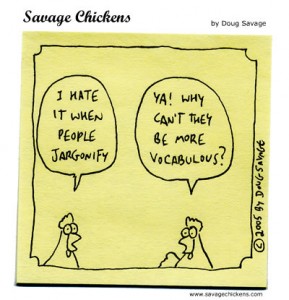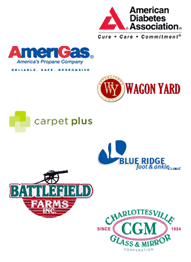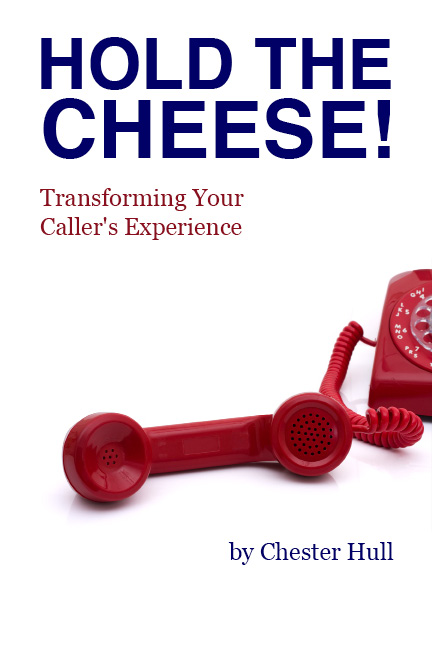 Using technical jargon is one of the easiest ways for a business to get tripped up in any of their marking or customer communications. Technical jargon…insider lingo…industry acronyms…it all comes from what I call “The Curse of Knowledge”.
Using technical jargon is one of the easiest ways for a business to get tripped up in any of their marking or customer communications. Technical jargon…insider lingo…industry acronyms…it all comes from what I call “The Curse of Knowledge”.
Because you’re immersed in your business, jargon, lingo, and acronyms all come natural to you. They simply “make sense”!
And yes, it happens to me all the time as well. (Doesn’t everyone know what an IVR is?)
And using jargon, lingo, and acronyms in your Auto-Attendant is certainly not a good practice.
In her recent article “The Hooptedoodle of Phone“, Melanie Polkosky puts it this way in her 7th Rule:
7. Use technical jargon—marketing patois—sparingly or not at all: Once you use some fancy terms simply because they appeared in a marketing brochure in 1996, you won’t be able to stop. It’s a form of self-congratulation on your effectiveness. A company’s usage of a slick, new term does not imply customer comprehension of it.
Just think if the Department of Transportation used jargon or their marketing speak on interstate roadsigns!
“Special Event ahead, expect higher than normal AADT”
“Do not drive on the SBL”
“Caution: DDE Work Ahead”
“K-118 1 Mile”
Telephone communications especially have low bandwidth to deliver your message, and unlike reading an ad, callers have to continue at the pace you set for them. You want to make the communication clear and precise.
The best way to eliminate jargon, lingo, and acronyms from your Auto-Attendant (and your marketing) is to have someone outside your industry review it for clarity.
Does it make sense? Do they understand it? Is it clear to an average caller?
If not, clarify and revise it until it’s clear, simple, and understandable.
Your callers will be delighted!

 Facebook
Facebook LinkedIn
LinkedIn Twitter
Twitter



